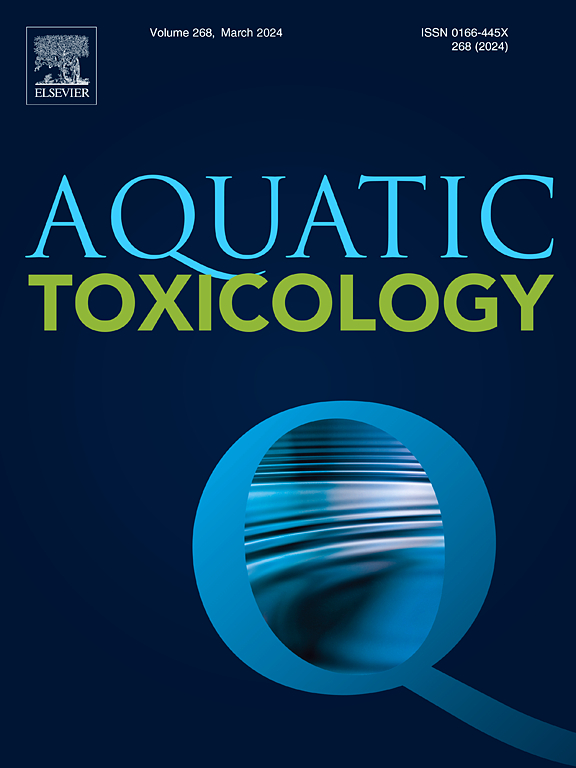Effect of antibiotics on diverse aquatic plants in aquatic ecosystems
IF 4.1
2区 环境科学与生态学
Q1 MARINE & FRESHWATER BIOLOGY
引用次数: 0
Abstract
The widespread presence of antibiotics in aquatic ecosystems, mainly due to their use in medicine and veterinary practices, poses a significant environmental challenge. Aquatic plants play a vital role in maintaining ecosystem stability, but their responses to antibiotics vary by species, influenced by differences in their traits and interactions with environmental factors. However, the specific ways antibiotics affect these plants remain poorly understood. In this study, we conducted a meta-analysis of 167 peer-reviewed studies to investigate the mechanisms of antibiotic uptake and their effects on different types of aquatic plants-submerged, emergent, and floating. Our analysis shows that antibiotics, particularly common ones like sulfonamides, tetracyclines, and quinolones, impact aquatic plants through multiple pathways. Submerged and floating plants often face widespread, direct exposure, resulting in “full-coverage” impacts, while emergent plants experience mixed exposure patterns, affecting both submerged and aerial parts and leading to “partial-coverage” impacts. These findings provide a foundation for phytoremediation strategies, enabling the rational selection and management of aquatic plant types to mitigate antibiotic pollution. Our study underscores the ecological risks posed by antibiotic contamination in aquatic ecosystems and offers a theoretical framework for developing effective restoration strategies.

抗生素对水生生态系统中多种水生植物的影响
抗生素在水生生态系统中的广泛存在,主要是由于它们在医学和兽医实践中的使用,构成了重大的环境挑战。水生植物在维持生态系统稳定中起着至关重要的作用,但受其性状差异和与环境因素相互作用的影响,它们对抗生素的反应因物种而异。然而,抗生素影响这些植物的具体方式仍然知之甚少。在这项研究中,我们对167项同行评议的研究进行了荟萃分析,以调查抗生素摄取的机制及其对不同类型水生植物(淹没、浮现和漂浮)的影响。我们的分析表明,抗生素,尤其是磺胺类药物、四环素类药物和喹诺酮类药物等常见抗生素,通过多种途径影响水生植物。淹没植物和漂浮植物经常面临广泛的直接暴露,导致“全覆盖”影响,而紧急植物经历混合暴露模式,影响水下和空中部分,导致“部分覆盖”影响。这些发现为植物修复策略的制定提供了基础,使水生植物类型的合理选择和管理能够减轻抗生素污染。我们的研究强调了抗生素污染对水生生态系统造成的生态风险,并为制定有效的恢复策略提供了理论框架。
本文章由计算机程序翻译,如有差异,请以英文原文为准。
求助全文
约1分钟内获得全文
求助全文
来源期刊

Aquatic Toxicology
环境科学-毒理学
CiteScore
7.10
自引率
4.40%
发文量
250
审稿时长
56 days
期刊介绍:
Aquatic Toxicology publishes significant contributions that increase the understanding of the impact of harmful substances (including natural and synthetic chemicals) on aquatic organisms and ecosystems.
Aquatic Toxicology considers both laboratory and field studies with a focus on marine/ freshwater environments. We strive to attract high quality original scientific papers, critical reviews and expert opinion papers in the following areas: Effects of harmful substances on molecular, cellular, sub-organismal, organismal, population, community, and ecosystem level; Toxic Mechanisms; Genetic disturbances, transgenerational effects, behavioral and adaptive responses; Impacts of harmful substances on structure, function of and services provided by aquatic ecosystems; Mixture toxicity assessment; Statistical approaches to predict exposure to and hazards of contaminants
The journal also considers manuscripts in other areas, such as the development of innovative concepts, approaches, and methodologies, which promote the wider application of toxicological datasets to the protection of aquatic environments and inform ecological risk assessments and decision making by relevant authorities.
 求助内容:
求助内容: 应助结果提醒方式:
应助结果提醒方式:


